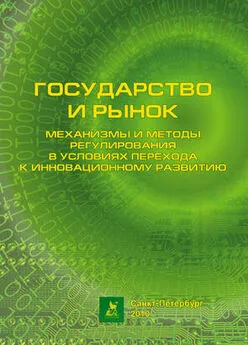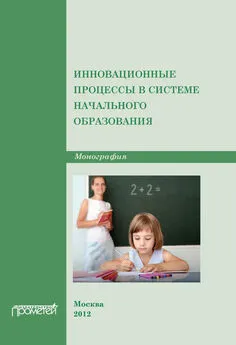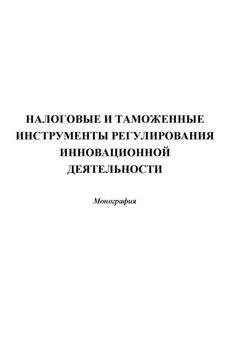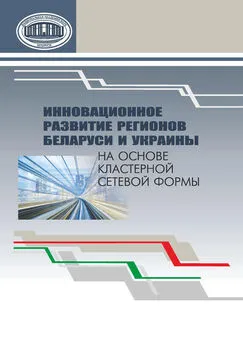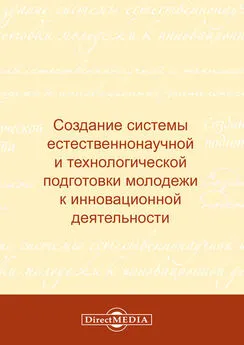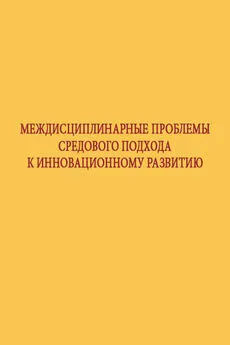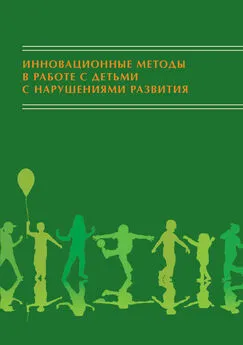Коллектив авторов - Инновационная сложность
- Название:Инновационная сложность
- Автор:
- Жанр:
- Издательство:Литагент «Алетейя»316cf838-677c-11e5-a1d6-0025905a069a
- Год:2016
- Город:Санкт-Петербург
- ISBN:978-5-906823-11-3
- Рейтинг:
- Избранное:Добавить в избранное
-
Отзывы:
-
Ваша оценка:
Коллектив авторов - Инновационная сложность краткое содержание
В книге рассматривается фундаментальная проблема инновационной сложности в контексте новейших достижений современной теории сложных систем. Представлены результаты исследований источников и факторов возникновения инновационной сложности, особенностей ее динамического роста и циклической эволюции, способов прохождения кризисов и неустойчивостей в ходе эволюции. Особое внимание уделено рассмотрению современных информационных, когнитивных и коммуникативных технологий, проблем сознания и творчества, стимулирования креативности, продуцирования научных, культурных и социальных инноваций. Показаны возможные приложения моделей рождения и эволюции инновационной сложности для анализа и прогнозирования развития природных, технических, когнитивных и социальных систем. Книга представляет интерес не только для ученых-исследователей, но и для широкого круга практиков проектирования, образования и управления, стремящихся принимать эффективные решения в условиях неопределенности и неоднозначности будущего и обеспечивать безопасность и качество функционирования сложных систем.
Инновационная сложность - читать онлайн бесплатно ознакомительный отрывок
Интервал:
Закладка:
Также следует добавить, что возможности для формирования у учащихся характеристик нелинейного стиля мышления имеет практически каждая дисциплина. Для достижения данной цели необходимо целенаправленно обращать внимание обучаемых на границы применимости классической науки, знакомить с современными научными теориями и гипотезами. Необходимо создавать условия для свободного выражения мыслей, учить проводить аргументацию своей точки зрения и корректному опровержению оппонента. Нужно формировать умение альтернативно мыслить.
Формирование нелинейного стиля мышления у участников образовательного процесса – это задача на будущее. Так как только человек, умеющий мыслить неординарно, нелинейно, может выйти на качественно новый уровень своей профессиональной деятельности.
Annonations
Vladimir I. Arshinov. On the Waytowardsan Observer-Constructor of Innovative Complexity
A wide range of questions connected with the formation in the modern post-nonclassical science of a new paradigm – the paradigm of innovative complexity – is under consideration on the article. When relying on the context of quantum mechanics, the author shows the necessity of inclusion the concept of observer-constructor of complexity in the discourse of the paradigm of complexity. The problem of construction of artificial intelligence as a practice of thinking in complexity is discussed.
Key words:observer of complexity, innovation, recursion, communication, multiplicity, complementarity
Helena N. Knyazeva. Innovative Complexity: The General Methodology and Ways of Organization of Cognitive, Communicative, and Social Systems.
In the article, the phenomenon of innovative complexity is considered from the methodological position based on the modern theory of complex adaptive systems and of conception of enactive cognition (enactivism) in cognitive science and in non-classical epistemology. From this standpoint, one can assern that properties of a complex system and of a medium into which it is built and in which it functions are determined each other. Complexity, emergent properties, activity and innovative potential of a system and its medium are reciprocal properties, which are built from each other and emerge in interactive interplay. The systems is determined by medium and builds its own medium that, in its turn, influences the system and constructs it. It is impossible to innovate a system, if the medium is not modified, and vice versa. Using the language of cognitive science as an interdisciplinary field, this phenomenon of their mutual connection is called nowadays the phenomenon of enactivism, of active inbuilding into environment. From these general methodological positions, the principles of organization of cognitive, communicative and social systems are considered.
Key words:autopoiesis, innovation, coevolution, coemergence, non-linearity, self-organization, system, complexity, emergence, enactivism.
Eduard M. Soroko. Complexity, integration, synthesis, harmony, measure, quality as highest ideological values and heritage of modern civilization
New time, the information age, requires a new knowledge on harmonization of distributed systems as complex ensembles and their structures. Existing information technologies are based on information as something that is sent through the channels of communication, and therefore are insufficient. Information technology of the second generation, based on the restricted diversity has not been created yet. It constitutes a strategic innovative resource of society and is designed for search of structural harmony of systems. Harmonization of systems is provided by binding the collective variable that expresses their states (relative entropy) to one of the invariants of its nodal values. This opens up entirely new and very broad prospects for understanding the world of objects as systems and world of systems of objects. In particular: regularly organize the inner space of any system consisting of a number of relatively independent, multiscale sub-systems – events, subdivisions, strata, components; ensure harmonization processes of structurally complex whole while giving it a high quality of functional, performance, aesthetic nature; design the optimal structural organization of complex systems while making their modes of operation more efficient; ensure the competitiveness of composite materials; diagnose complex systems viewed as integral units, as organisms, in terms of their normal or pathological ways of functioning; minimize costs of finding effective variants of production cycles and production processes, while improving dramatically the control of the experiment; during epidemics reliably make the selection of the most effective treatment options for human and animal therapy under time pressure; carry bioindication of states of environmental systems, etc.
Key words:Harmony, disharmony, complexity as addition, the integral measure states of systems, quality, synthesis, limited variety, information entropy, generalized golden sections, nodes measures, universal principles, object as a system, the system objects, structure-attractors, synergetics, transdisciplinarity.
Helena N. Knyazeva and Elena S. Kurkina. Space-time Dynamics of Evolutionary Processes in Complex Systems.
The evolutionary model elaborated by Sergei P. Kurdyumov is considered in the article. Some key ideas put forward by him constitute a basis for development of the methodology of sudy of complex selforganizing systems, called also synergetics. Four important theoretical notions form a fundament of this evolutionary model: connection between space and time, complexity and its nature, blow-up regimes, in which self-organization and rapid, avalanche-like growth of complexity occur, evolutionary cycles and switching of different regimes as a necessary mechanism for maintenance of "life" of complex structures. The methodology allows to understand the nature of innovative shifts in nature and society and to show a possibility of management of innovative processes and of construction of desirable future. Some approaches for possible application of this model for understanding of dynamics of complex social, demographic and geopolitical system are discussed.
Key words:innovation, construction of the future, coevolution, nonlinearity, instability, blow-up regimes, space and time, selforganization, synergetics, complex systems, tempoworlds.
Irina A. Beskova. The Methodology of Study of Cognitive Complexity.
The more complete pattern of the realities' interrelations than those, which are proposed by a classical epistemology, is introduced in the article. Moreover, it is just this configuration according to which the phenomenon of complexity is regarded. This position is caused by the idea that it is impossible to reveal the real roots of complexity if we limit ourselves by the world of physical reality as the only existing one. The notion of a human-dimensional complexity is imposed and the roots of its emergence are shown. For elaboration of cognitive resources, which are adequate to a complexity analysis the model of a vertical hierarchy of worlds, which are connected by the relation of creation, is proposed. It is argued that as an analogous one to the complexity dynamics in an external world we can regard the dynamics in a creative thinking sphere. Theme of dual – non-dual, the mind-body problem, the preconditions and consequences of the observer position in a cognitive process are investigated. The concepts of an integral complexity, of a creative complexity and non-dual simplicity are introduced. Cycles of the complexity dynamics, which are enough to express the wealth of structural phenomena transformations, are marked.
Keywords:methodology, complexity, embodiment, mind, creativity, knowledge, experience, duality, non-dual, integrity, consciousness, integral complexity, non dual simplicity.
Natalia M. Smirnova. The Concept of Communicative Complexity in the Framework of (Post)non-Classical Rationality Paradigme
Heuristic power and cognitive limits of the complexity concept in socio-cultural cognition is viewed in this paper. It is shown, that the use the concept of complexity seem to help us not only to recognize to what extent social thinking could assimilate basic ideas and norms of synergetics' thinking, but also to make more profound methodological reflection upon natural and social sciences' integration process. It is also substantiated, that the study of temporality semiotics as an instrument of complexity reduction appears to be one of the most significant aspects in methodological recognition of the above-mentioned process in social thinking and activity.
Key words:complexity, meaning, autopoesis, re-entry, reflexive self-reference, complexity observer, complexity reduction, temporality semiotics, natural and social sciences' convergence.
Julia S. Morkina. The complexity of creative activities
The meaning is investigated by methods of phenomenology and theory of complex systems. It is shown that a reflexive act as unit of separate meanings is never given to consciousness, but the meanings forms complex systems – concepts – in which the consciousness thinks. Concept may be both purely logical and coming from imagery. It is important that the concept grasped the basic properties of the object
relative to which the concept is formed. Art concepts differ from scientific and philosophical, and their constituting as complex systems of meanings we investigate separately. Artistic creativity is seen as a type of knowledge, able to be modeled in the framework of our models (autopoietic consciousness, complex dynamic act, a complex situation, the main component of which is the consciousness of subject). Insight is considered as a self-organizing of systems of meanings in the consciousness.
Keywords:meaning, complex systems, concept, consciousness, situation of creativity.
Stanislava A. Filipenok. The Complexity of a Personal Experience.
In the article, the analysis of notions of personal experience and personal knowledge is carried out by the virtue of nonlinear-dynamic and system approaches. Personal experience is considered as holistic and dynamic entity, and its constitutive cognitive capabilities are investigated in inextricable connection with each other. This methodology allows to explore a number of problems of the non-classical epistemology and of the modern cognitive sciences: how different facets of individual mental life are related with each other and environment in cognitive activity; what mechanisms underlie creation, the processes of self-consciousness and knowing of the external world; what interrelation of objective and subjective aspects of knowledge is in the structure of the personal knowledge and so on. Personal experience is represented as complex open system possessing emergent properties in regard to its particulars, which are specific mental capacities, and providing harmonious interaction of its elements. By the means of dynamic approach mental evolution of a person is described as a nonlinear process which is accompanied by periodic rise of a principally new personal knowledge and complicating of cognitive structures forming subject's consciousness.
Читать дальшеИнтервал:
Закладка:


